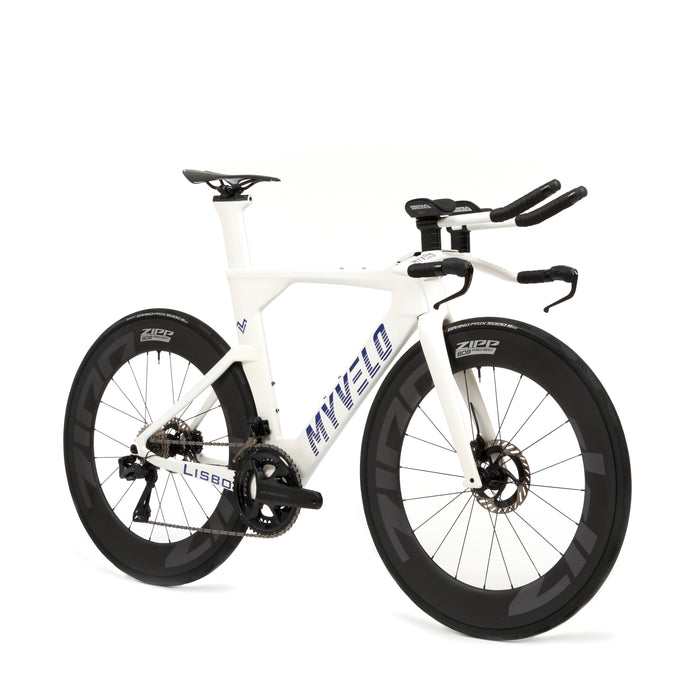
Lisboa triathlon bike
incl. FREE shipping & free returns

The center-pull brake is a type of bicycle brake used to slow down the bicycle. It is also known as a "rim brake" or "V-brake" and is one of the most commonly used brakes on bicycles.
The center-pull brake consists of two parallel arms attached to the sides of the bicycle frame . Each arm has a brake shoe that rests against the rims of the bicycle. The brake shoes are equipped with rubber blocks or special pads that press against the rims, thus slowing the bicycle .
The center-pull brake is operated by pulling a lever on the brake handles that is connected to a cable. The cable runs through the brake hose and is attached to the brake arms. When the brake lever is operated, the cable pulls on the brake shoes, which presses them against the rims and slows the bike.
Here are some advantages and disadvantages of the center-pull brake (also known as V-brake):
Advantages:
Disadvantages :
Are you looking for a bike with reliable brakes regardless of the weather? MYVELO e-bikes have powerful brakes with short braking distances and will get you to your destination safely.

Fahrradpedale zu wechseln ist eine einfache, aber essenzielle Wartungsaufgabe, die jeder Radfahrer selbst erledigen kann. Ob für ein Upgrade, den Austausch abgenutzter Pedale oder den Wechsel zwischen Klick- und Plattformpedalen – mit der richtigen Anleitung gelingt der Wechsel problemlos.

Für Radfahrer, die ihre Fahrräder bequem transportieren möchten, bieten Fahrradträger eine praktische Lösung. Doch die Auswahl ist groß, und nicht jeder Träger ist gleich. Besonders bei der Wahl zwischen einem Träger für die Anhängerkupplung und einem Modell für die Heckklappe stellen sich viele Fragen. In diesem Artikel werfen wir einen Blick auf die beiden gängigen Typen und vergleichen ihre Vor- und Nachteile.

Die Kettenschaltung ist ein essenzieller Bestandteil des Fahrrads, der für eine reibungslose Kraftübertragung und effizientes Fahren sorgt. Wenn die Gänge nicht sauber schalten, schleift die Kette oder springt von den Ritzeln, kann das Fahrerlebnis erheblich beeinträchtigt werden. Mit ein paar einfachen Handgriffen lässt sich die Kettenschaltung am Fahrrad selbst einstellen.